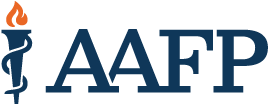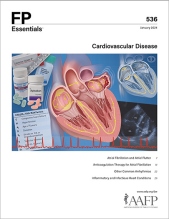
This clinical content conforms to AAFP criteria for CME.
Patients with atrial fibrillation (AF) should receive anticoagulation with warfarin or direct oral anticoagulants (DOACs) if the CHA2DS2-VASc (Congestive heart failure, Hypertension, Age 75 years or older [doubled], Diabetes, prior Stroke or transient ischemic attack or thromboembolism [doubled], Vascular disease, Age 65 to 74 years, Sex category) score is at least 2 in men or 3 in women. Antiplatelet therapy is not recommended. DOACs typically are the first-line therapy. Anticoagulation requires special consideration in some patient groups (eg, patients with bleeding problems should be considered for left atrial appendage occlusion devices, rather than anticoagulation). Atrial high-rate episodes detected on electronic devices confer higher AF risk; however, there currently are no clearly defined thresholds to determine who benefits from anticoagulation. Patients with AF with valvular heart disease should receive anticoagulation based on CHA2DS2-VASc score; those with mechanical heart valves or moderate to severe stenosis of a native mitral valve should receive warfarin, not DOACs. Chronic kidney disease requires dose reduction. Patients with AF taking antiplatelet therapy for acute coronary syndrome or percutaneous coronary intervention require special consideration because of the bleeding risk. The risk-benefit profile favors anticoagulation in older adults. Patients undergoing surgical procedures with high bleeding risk often need temporary anticoagulant discontinuation. Patients receiving anticoagulation who develop life-threatening bleeding should receive reversal therapy.
Subscribe
From $350- Immediate, unlimited access to FP Essentials content
- 60 CME credits/year
- AAFP app access
- Print delivery available
Edition Access
$44- Immediate, unlimited access to this edition's content
- 5 CME credits
- AAFP app access
- Print delivery available
